Knowing which keyword phrases your customers are using to find your website gives you a much better understanding of what products and services your customers want, and shows you where you should be concentrating your SEO efforts in order to attract the right people.

Before October 2011, Google Analytics showed you every keyword phrase that people used to find your site. However, since late 2011, Google has started encrypting all searches conducted by people logged into any Google account, as well as those who are using Firefox 14+, which means that you are no longer able to see what search terms many of your visitors used to find your website.
In 2014, this means that the majority of keywords on your Google Analytics page are not provided, which is understandably frustrating for online business owners.
Fortunately, there are a number of hacks that you can use to get a good idea of what those keywords are. These fixes will not give you the same comprehensive overview you could get before 2011, but with a little analytical insight, you will be able to get a pretty accurate idea of what keywords are performing well.
Note: If you don’t already have Google Analytics set up, we strongly recommend you sync Analytics with your website. It is a vital, free tool for any online business owner. You can read a guide to setting up Google Analytics for your website here.
1. Basic Techniques
1. Use Google Webmaster Tools
If you don’t already use Webmaster Tools, we strongly recommend that you set up an account and sync your website.
Google Webmaster Tools actually shows you:
- Keyword phrases people have used to find your site
- Your approximate search page ranking for those keywords
- The number of impressions (people who see your website in Google’s search results)
- The click through rate (the number of people who click through to your website)
To access this information, click on “Search Traffic” on the left side of the page.
Then click on “Search Queries”.
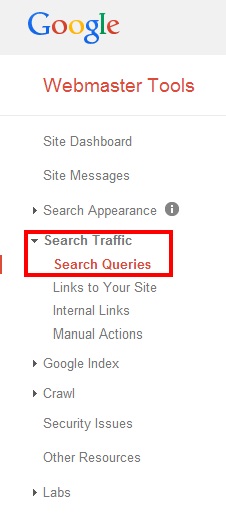
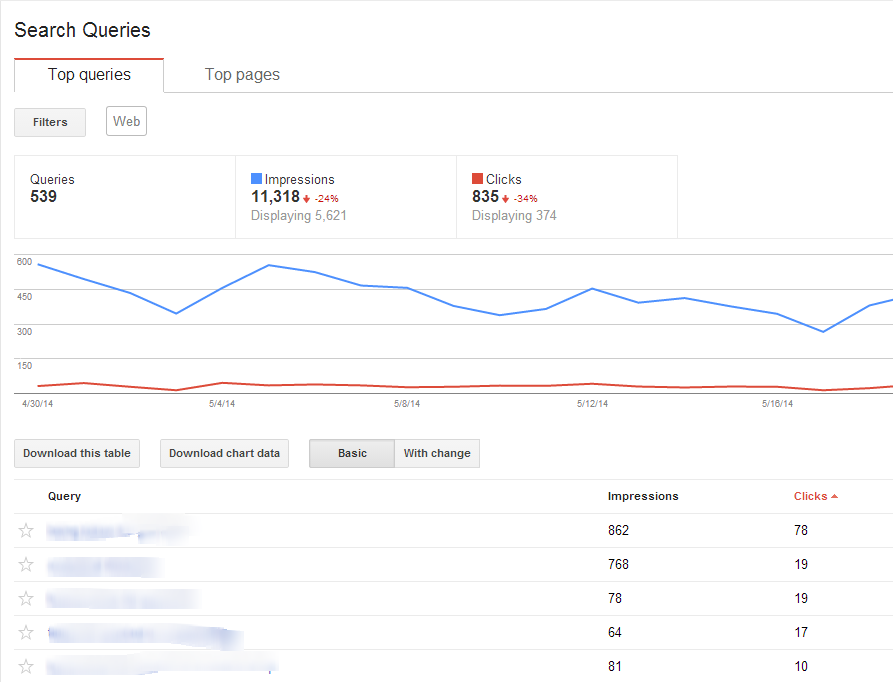
There are several drawbacks to using Webmaster Tools. The data is quite limited if your site gets a lot of visitors, and many people claim that the data is fairly inaccurate. As well as this, search queries aren’t linked to landing pages, so you can’t be sure which keywords are leading people to which specific pages.
2. Look at Non-Google Keywords
In the UK, 90% of searches are run using Google, which doesn’t leave much room for other search engines (the next biggest being Bing). Despite the fact that Bing and smaller search engines don’t send much traffic your way, it is still quite likely that Bing users are searching with the same keywords as Google users.
Therefore, you can still use the few non-Google search queries you receive to get an idea of what keywords are bringing you traffic through Google. This is especially true of sites that get huge volumes of traffic, or aren’t based in the UK, where Google doesn’t have such a monopoly.
To see search queries through other search engines, go into your Google Analytics account and click on “Acquisition” in the left-hand menu.
Scroll down the drop-down menu and select “Keywords” and “Organic”
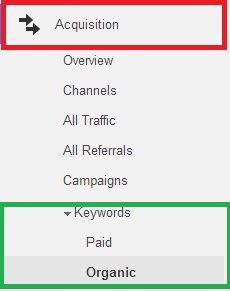
Select “Secondary dimension” and select “Acquisition” from the drop-down list.
In the acquisition drop-down menu, select “Source”
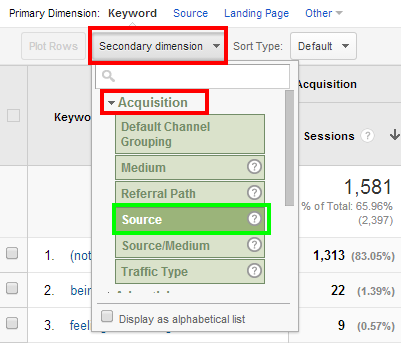
This will show you your keywords broken down into which search engine your visitors used to find you.
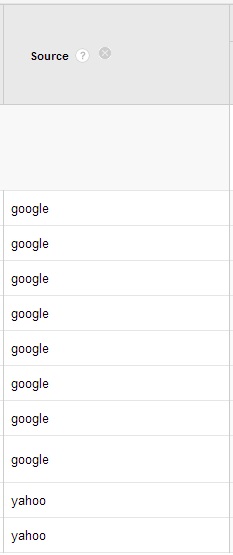
2. Intermediate Techniques
1. Look At Your Long-Tail Keywords
By looking at the pages people are landing on, and then analysing what keywords they used to get there, you can get an idea of what keywords are being omitted by Google.
Instead of just staring at a huge number of random (not provided) keywords, by looking at each landing page specifically, you can see what impact keywords are having on the urls that attract most of your visitors.
To do this, click on “Behavior” in the left-hand menu in Google Analytics, and then click on the “Site Content” drop-down menu.
Then click on “Landing Pages”
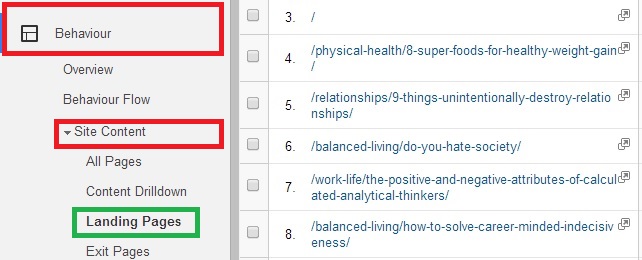
Click on the page that you want to view.
Then click on “Secondary dimension” and select “Advertising”, then select “Keyword”.
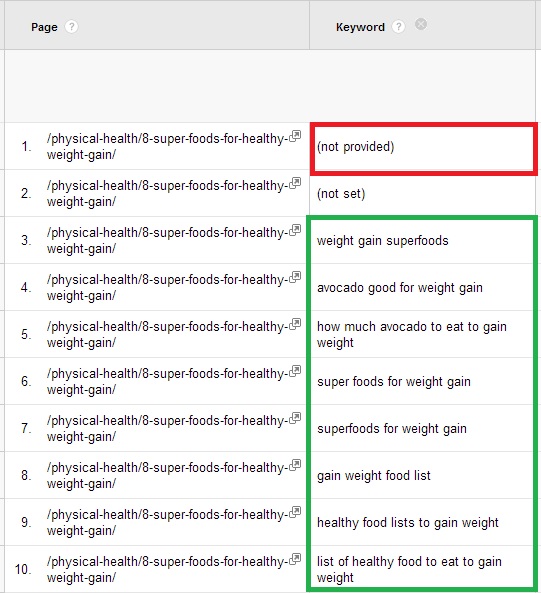
Obviously, most of the keywords are still (not provided), but by looking at the keywords that are still there, you can get an idea of what people are searching for to reach that specific page on your site.
2. Track Internal Search on Your Website
If your website has its own internal search function, you can analyse internal searches to get a good idea of what people are coming to your site for. In some ways, this is just as valuable as the keywords used to find your site in the first place, as it shows you what people actually want from your business.
By looking at internal data, you can make sure that what people are looking for is easily accessible, and you can also track website exit rates to ensure that you are delivering what they want.
To set up internal search tracking in Google Analytics, go to the Admin panel at the top of the page.

Go to “View Settings” on the third column.

Scroll all the way down to “Site Search Settings” and click the “Site search Tracking” button to “on”.
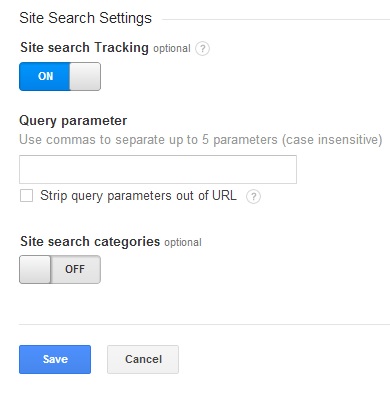
Open up your own website in a new web browser tab and do a quick internal search on your site.
You now need to find your query parameter.
You can often see the query parameter by looking at the URL of the search results page. At the end of the URL there should be a ? followed by several characters. Find your search keywords amongst those characters and then look for a = symbol immediately before them. Whatever characters are sandwiched between the ? (or sometimes a & symbol) and the = is your search parameter.
For example, in the URLs below the search parameter is “s”:
www.example.com/?s=keyword+not
www.example.com/?lang=en&s=keyword+not
Note: Sometimes you might not be able to find the search parameter using the method above. You might need some help from your webmaster in this case.
If you’re confused, refer to the Google guidelines on finding the search parameter here.
Now go back to your Google Analytics page and insert the parameter into the “Query parameter” box.
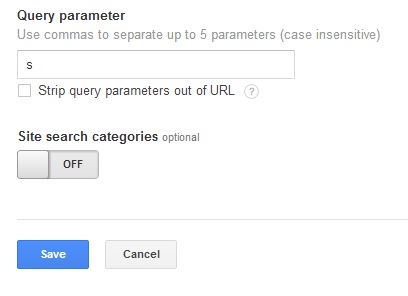
Your Google Analytics is now set up to track internal searches.
You can view your reports by clicking on “Behavior” and selecting “Site Search” from the drop-down menu.
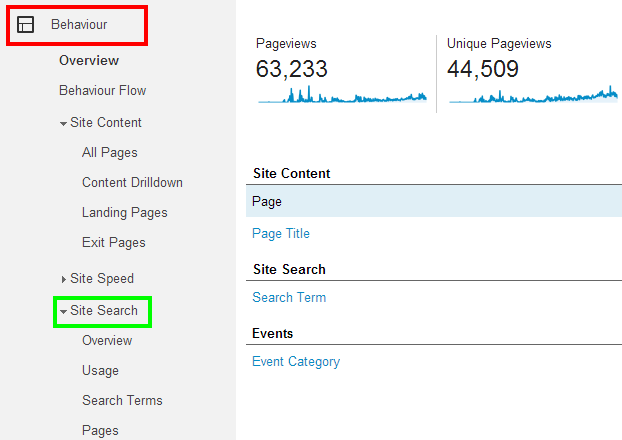
3. Advanced Techniques
1. Using Filters and Segments
This final method is fairly advanced, and you might find it tricky if you’re not used to using Google Analytics. It’s essentially a much more sophisticated version of the technique in the previous section: “Look At Your Long-Tail Keywords”.
This method essentially allows you to see where all of your (not provided) visitors landed, which once again gives you a pretty good idea of what they would have been searching for.
For example, instead of just having a report that shows 580 keyword not provided, using this filter, you will see this result broken down into number of hits per landing page.
For example, if you can see that 100 of those 580 visitors have landed on a sales page that is well optimised for “men’s combs”, you can be fairly sure that the keywords they used would have been “men’s combs” or a similar variation.
To set this up, go to the Admin panel in Google Analytics and select “Filters”.
Click on “New Filter”.
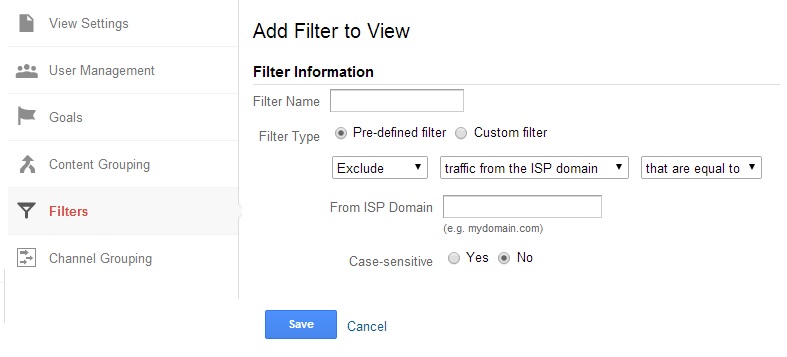
Click on “Custom Filter” and select “Advanced”.
Fill out the following information.
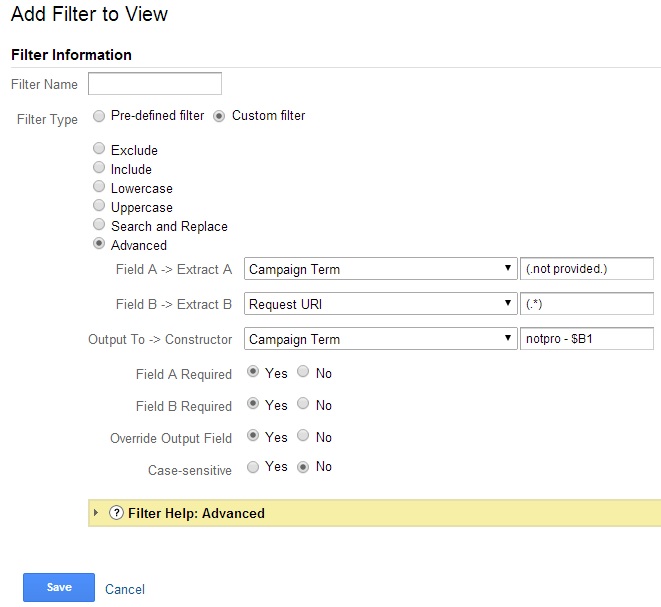
This means that Google Analytics now filters any search term that includes the words “not provided” and then shows you the URL that the visitor is accessing.
Now, any result beginning “notpro” will show you where your hidden visitors are heading on your site.
Discover
The 12 Marketing Secrets of Fast-Growth Companies
Find out what they do to achieve outrageous business success

Get your free copy

 By
By 
Thank you for taking your time to do this tutorial! Really Helpful.
Hi Thanks for sharing the great article,
So I’ve implemented this filter last week and currently no data is available in Acquisition – SEO – Queries, so now how can I see the pages where all those visitors are landing.
Which section?
Rajiv, easiest way to do this now is to leave Google Analytics and login to the Google Search Console (formerly, Google Webmaster tools). Add your website property and verify it. Once verified, go to Search Traffic > Search Analytics and you will see all the queries people use to find you in Google with the exact pages they land on.